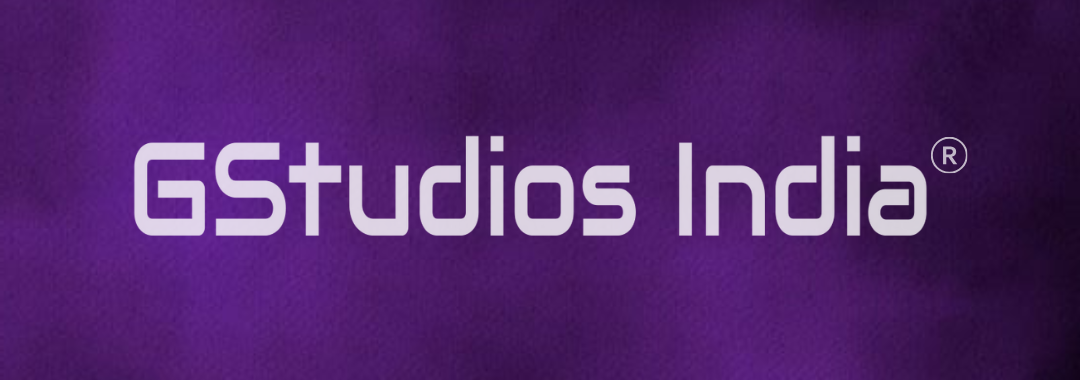Welcome to the captivating world of recording and microphones, where every sound tells a story! From microphones used in small studios to your favorite BTS concerts worldwide, each microphone has specific characteristics that make it suitable for capturing various audio scenarios, influenced by factors like environment and application. Sound capture refers to the recording process, with microphones serving as the key tools for capturing unique sounds. They convert sound waves into electrical signals for amplification and recording. Choosing the right microphone and using the right microphone techniques are essential to achieving high-quality sound recordings in various applications.
🎤 Why Quality Matters: Elevating Your Sound Experience
Sound quality plays a crucial role in the effective delivery of content and enhances the overall experience for both creators and recipients. It requires utmost care and attention, as it is essential for audio-related projects. It is important to value and pursue high-quality sound, as it greatly enriches our overall listening experience and engagement with audio content.
High-quality sound impacts various aspects of audio delivery, including:
- The listening experience: High-quality sound makes the whole experience soothing and engaging. The listener tries to absorb every minute detail of the sound they are receiving, from the voice to the background noise. Sound must convey emotions curated by the creator. This results in a deeper experience.
- Emotional impact: Sound plays an important role when it comes to emotions. The power of storytelling, podcasting, and film can create a true sense of experience and connection. This is also a technique for curators to connect personally with their audiences.
- Effective communication: Clear sound quality is essential for effective communication in various professional settings, such as business meetings, conferences, or teleconferences. It plays a vital role in ensuring that all participants can understand and express themselves without hindrance, preventing misunderstandings and increasing productivity.
🎶 How Does Microphone Selection Affect Sound Quality?
As we already know, microphones play a major part in recording and the overall sound quality as well as output accuracy. Microphones have some key effects, such as sound capturing accuracy, tone, character, noise, background rejection, and artistic expression.
Let us break down these terms briefly.
- Accuracy of sound pickup: Microphones come in different shapes and sizes, each with its way of picking up sound. They have different frequency responses, polar patterns, and sensitivity levels that affect how well they capture and reproduce sound. When you choose the right microphone for a recording, it can accurately capture the intended sound without adding unwanted noise or altering the original sound. A good microphone will successfully reproduce the sound you want to record.
🎤 What is the Polar Pattern?
Think of a polar pattern as the microphone’s listening zone, determining where it’s most sensitive to sound. It shows in which directions the microphone is most sensitive to sound and where it’s less sensitive. Different polar patterns determine how a microphone captures sound from different angles, like a spotlight that shines on the centre stage while ignoring others. It helps you choose the right microphone to capture sound in specific situations.

There are various common types of polar patterns found in microphones that have unique characteristics:
Omni-directional: It captures sound equally from all directions, creating a spherical pickup pattern. This pattern works well when you need to capture a more captivating sound field, such as a choir recording or field recording.
Bi-directional: It captures sound equally from the front and back of the microphone while rejecting the sounds coming from the side. It is used to record panel interviews or discussions where two people are sitting on opposite sides of the microphone. It offers versatility and accurate audio capturing.
Cardioid: They reject sounds that are coming from the side, and rarely, they are sensitive to sound coming from the front of the microphone. They are mainly used for podcasting, broadcasting, and live sound reinforcement. They are highly effective for capturing the desired sound while minimizing background noise.
Super cardioid: It offers an enhanced rejection of sound from the rear as compared to cardioid microphones. It allows clear sound production and is effective at rejecting ambient noise.
Hyper cardioid: This pattern is a further variation of the cardioid pattern, which offers an upgraded rejection of sound, allows for precise sound capture, and is commonly used for live performances and broadcasting.
Ultra cardioid: It is a more focused pattern that provides optimized rejection of sound and minimizes rear-facing noise sources. It has an extended reach and can capture sound sources from great distances. It is mostly used in broadcast production and studio recordings.
- Tone & character in microphone: Each microphone has its own unique sonic signature and tonal characteristics that can influence the sound being captured. For example, some microphones may add warmth and richness, while others may provide clarity and brightness. The choice of microphone can significantly impact the desired tonal qualities and artistic expression of the recording.
- Noise and background cancellation: Microphones excel in minimizing unwanted background noise and accommodating loud sounds. Selecting a microphone with good noise rejection and low self-noise can greatly improve the recording quality by reducing unwanted background noise and maintaining a clear signal.
- Quality & Durability: The quality and design of a microphone can significantly impact its performance.
🎙️Exploring Different Kinds of Microphones
Microphones vary in shape and size, each designed to capture sound in its unique way. Here are some of the most common types of microphones:

- Dynamic microphones: Known for their durability and high sound pressure handling, these microphones excel in live settings and minimize background noise. They are known to be velocity-sensitive as well. They capture sound primarily from the front and have reduced sensitivity to sound coming from the sides and rear. This allows for better isolation of the desired sound source and minimizes background noise. Dynamic microphones are often favored for broadcasting and podcasting due to their durability, ability to handle proximity vocal recording, and resistance to handling noise.
- Condenser microphones: These types of microphones are highly responsive to sounds and are favored in professional recording and broadcasting environments due to their high sensitivity, accuracy, and ability to capture fine details. They are essential for capturing studio-quality sound and are often the preferred choice for professional vocal and instrumental recordings, as well as podcasting and broadcasting.
- Ribbon microphones: Ribbon microphones are delicate and fragile. They require care when you are handling them, especially from wind blasts and humidity. They are often preferred for recording genres such as jazz, blues, orchestral, and vintage styles. Ribbon microphones are mostly preferred in professional studio recording environments for specific applications, providing a warm, vintage-inspired sound, though they may be less commonly used today due to their fragility compared to dynamics and condensers.
- USB: This type of microphone offers a very easy setup of plug-in and plug-out. USB microphones provide a convenient and accessible solution for recording audio directly into computers or other USB-enabled devices. They are ideal for podcasters, content creators, streamers, and anyone in need of a simple and portable recording setup without sacrificing audio quality.
💻 At What dB Should Vocals Be Recorded?
- The range of -6 dB to -12 dB is commonly recommended as a target for the average peak level in finalized audio, allowing sufficient headroom to prevent distortion.
- This range provides a good balance between maintaining a healthy dynamic range, ensuring the audio is not too low or too loud, and allowing for headroom during playback on different devices or platforms.
🎙️Why Does Vocal Level Matter?
Make sure that the loudest part of the vocal performance does not exceed the maximum capacity of the recording equipment. It’s important to capture the quieter and louder parts of the vocal performance while maintaining an average dB level that allows for clarity and avoids distortion. Monitoring recording levels, avoiding distortion, and maintaining clarity are key considerations when setting the average dB level of vocals during recording.
💡Recording Tips to Keep in Mind for an Easy and Hassle-Free Recording
For those seeking a smooth and hassle-free recording experience, this guide provides practical tips and strategies. Whether you are a musician, podcaster, or voice actor, the quality of your recordings depends heavily on effective preparation and final output. To ensure excellent results, it is vital to consider key factors such as choosing the right recording space, optimizing your equipment, and creating a relaxed environment. By following these recommendations, you can simplify the recording process and effortlessly achieve professional-quality audio. So, let’s dive into these tips and set the stage for a hassle-free recording journey.
- Test your equipment beforehand: Before starting, either individually or with a guest, make sure to try and test your equipment. This will help you to deal with any technical issue beforehand only.
- Take breaks: Make sure to take breaks while recording. To sustain your focus and avoid exhaustion during recording sessions, it is essential to schedule periodic breaks. These intervals allow you to rejuvenate and maintain optimal performance throughout the recording process.
- Warming up session: Engaging in vocal exercises, stretching your vocal cords, and staying properly hydrated can have a significant impact on your performance. By warming up, you enhance the clarity, flexibility, and overall quality of your recordings.
- Explore and learn more: the recording process with a mindset of exploration and enjoyment. Embrace the opportunity to venture into uncharted territory and fearlessly experiment with different techniques. Feel liberated to explore a range of microphone placements, fine-tune settings, and remain receptive to creative inspirations that emerge during the session. Always remember that recording is a dynamic journey, and it should be filled with pleasure and satisfaction.
Conclusion
In conclusion, the art of sound recording is an exciting and fulfilling journey that blends technical expertise with artistic vision. Through the meticulous process of microphone selection, careful positioning, setting refinement, and creative decision-making, you elevate the act of recording into an immersive experience.
This transformative process allows you to harness the power of sound to evoke emotions, tell captivating stories, and create a lasting impact on your audience. So dive into this captivating realm, explore its intricacies, and unleash your boundless creativity to create recordings that resonate with the essence of your unique artistic vision. Embrace the art of sound recording and embark on a journey where technical mastery and creative expression converge to create extraordinary sonic landscapes.
🚀 Ready to take your audio skills to the next level?
Join our exclusive courses today—limited seats available! Book your FREE CONSULTATION now!
Authored by : Sudeshna Saha || Graphics by : Maansi Jain





